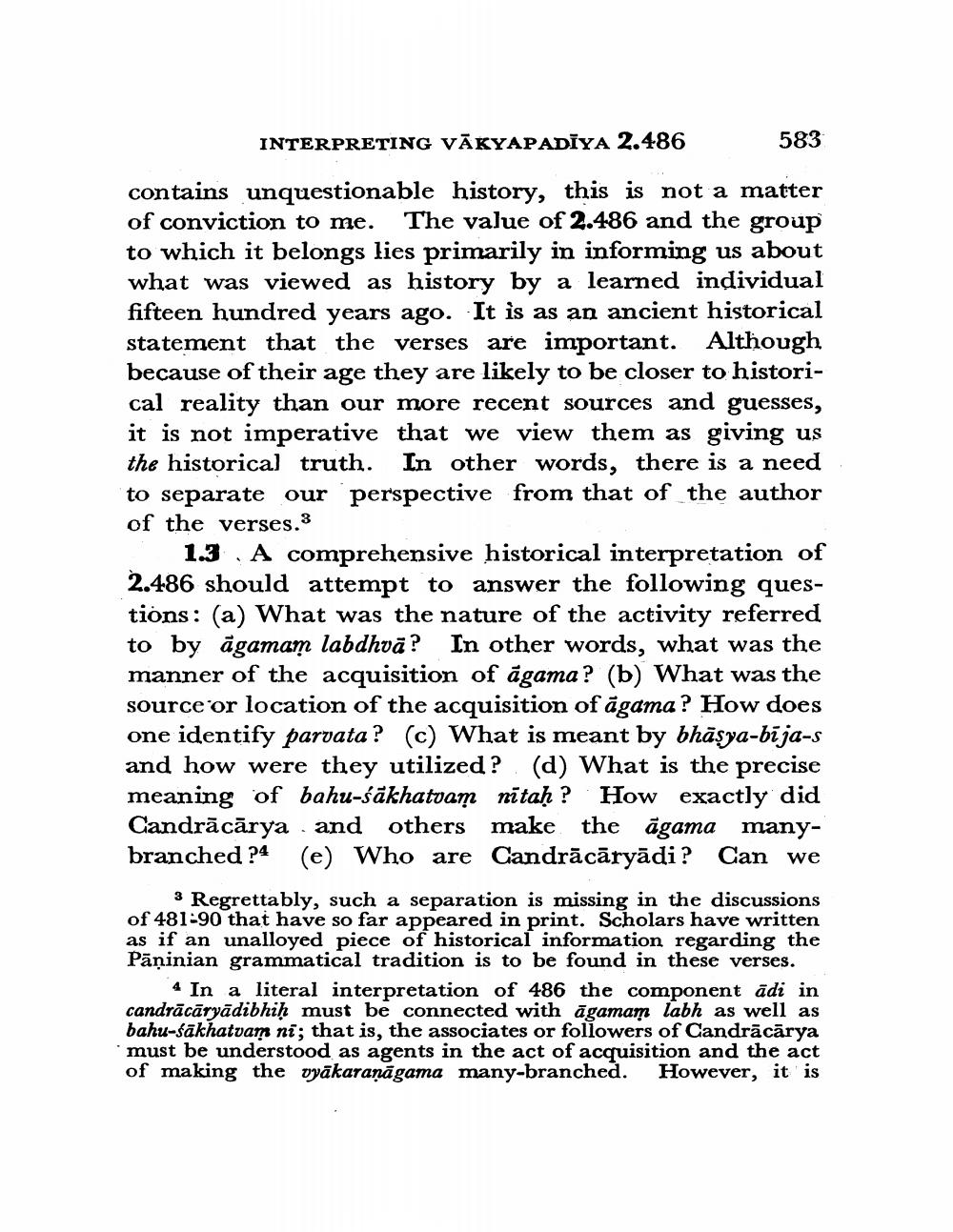Book Title: Interpreting Vakyapadiya Historically Author(s): Ashok Aklujkar Publisher: Ashok Aklujkar View full book textPage 3
________________ INTERPRETING VĀKYAPADĪYA 2.486 583 contains unquestionable history, this is not a matter of conviction to me. The value of 2.486 and the group to which it belongs lies primarily in informing us about what was viewed as history by a learned individual fifteen hundred years ago. It is as an ancient historical statement that the verses are important. Although because of their age they are likely to be closer to historical reality than our more recent sources and guesses, it is not imperative that we view them as giving us the historical truth. In other words, there is a need to separate our perspective from that of the author of the verses. 3 1.3 . A comprehensive historical interpretation of 2.486 should attempt to answer the following questions: (a) What was the nature of the activity referred to by āgamam labdhvā ? In other words, what was the manner of the acquisition of agama? (b) What was the source or location of the acquisition of agama ? How does one identify parvata? (c) What is meant by bhāsya-bija-s and how were they utilized ? (d) What is the precise meaning of bahu-śākhatvam nītaḥ? How exactly did Candrācārya and others make the āgama manybranched ?4 (e) Who are Candrācāryādi? Can we 3 Regrettably, such a separation is missing in the discussions of 481-90 that have so far appeared in print. Scholars have written as if an unalloyed piece of historical information regarding the Pāņinian grammatical tradition is to be found in these verses. 4 In a literal interpretation of 486 the component ādi in candrācāryādibhih must be connected with āgamam labh as well as bahu-sākhatvam ni; that is, the associates or followers of Candrācārya 'must be understood as agents in the act of acquisition and the act of making the dyākaranāgama many-branched. However, it isPage Navigation
1 2 3 4 5 6 7 8 9 10 11 12 13 14 15 16 17 18 19 20 21
